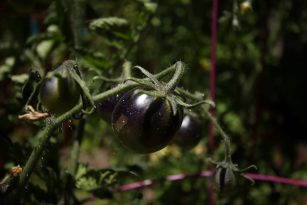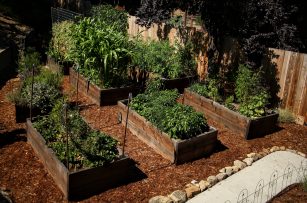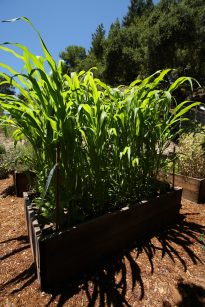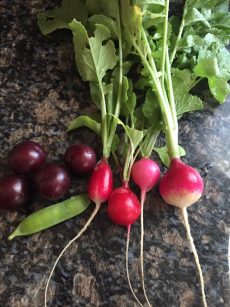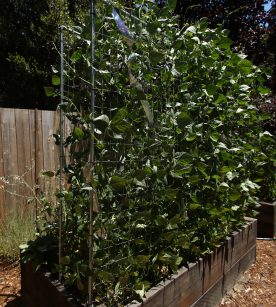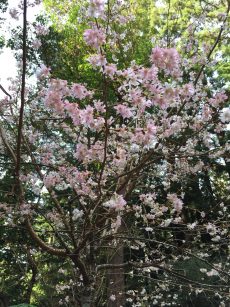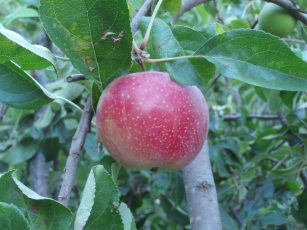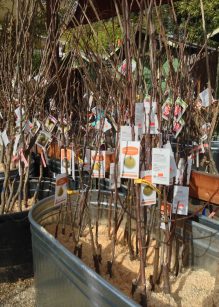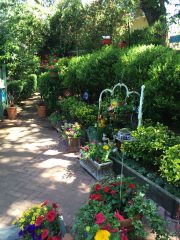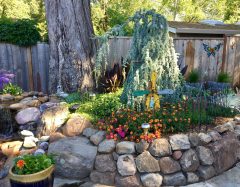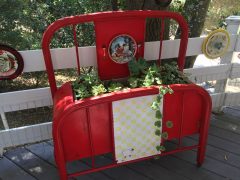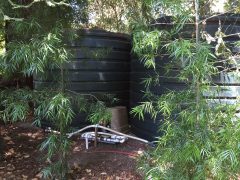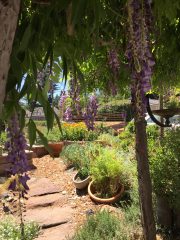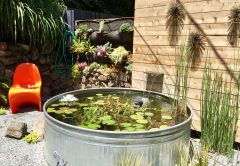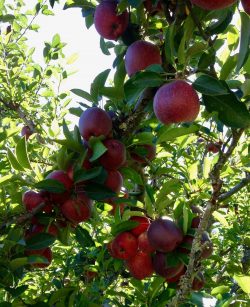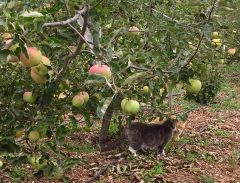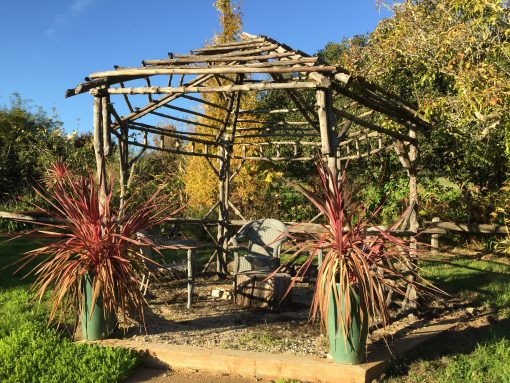
Will spring ever get here? Usually at this time of year we are enjoying mild weather and have spring fever big time. This year it seems the rain and cold weather will never end. That’s all good for the trees and shrubs, not so good for starting new perennials or changing the garden layout.
This year’s gardening trends will be right up your alley if you approach your landscaping in a way that’s natural. Think unfussy wildflowers, romantic arbors, meandering gravel paths, edibles, mixing styles and you’re there. What could be easier as we wait for the rains to lessen up?
A fellow designer I know built a gazebo for her garden from downed branches. Maybe shorter branches can be fashioned into a rustic fence. This year there’s no shortage of branches so start collecting now. If carpentry isn’t your thing you can put together a raised vegetable bed from 2×6 inch lumber and stacked planter wall blocks available at most building supply stores. Be sure to use gopher wire at the bottom of your new raised beds if you have these critters.
Most of us garden with a backdrop of mountains. Nature is all around us even if you live in a neighborhood with curbs. Some of the new trends will appeal to those who grow edibles while some will appeal to the gardener who loves their garden but doesn’t have time to do a lot of maintenance. What’s new this year is a return to some old fashioned ideas.
Embrace the smaller garden. You can create an instant meditation garden that encourages you to stop and sit for a couple minutes by placing a small bench where you can view something interesting in your garden. Small gardens are not only compact they are easier to care for. Containers on the patio or deck allow you to grow plants for food as well as for the birds and the bees. There are more new dwarf vegetable, herb and flower varieties being introduced every year.
Combine ornamental plants with edibles. Your veggies don’t have to be in a special raised bed or plot but can be planted throughout the garden. Think tomatoes, pole beans and other vining veggies trained on a metal obelisk within a perennial bed. Or compact versions of beans, eggplant, chard, hot peppers, tomatoes or edible flowers like nasturtiums planted among your other plants or along path borders.
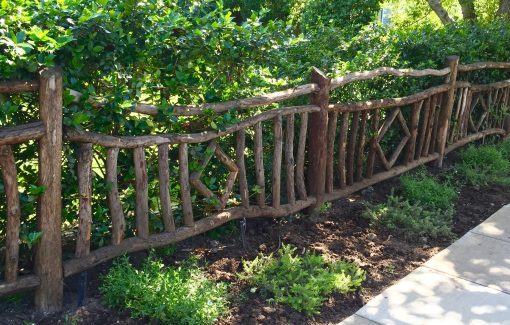
To create a sense of privacy, peace and quiet, enclose your garden. When a fence isn’t possible or preferred, plant a deep bed of mixed low water, low maintenance shrubs as a screen. Vines, like clematis, grown on a trellis provide nearly instant privacy and enclosure. If the front of your house faces the street, a few well-placed shrubs can block the view into your home.
Many of us are removing overgrown shrubs and replacing them with water smart, easy-to-care-for plants that will stay the right size in smaller spaces. There are new compact and dwarf versions of old plants that have been garden favorites for a very long time. The reason they have endured is because they are reliable. Good reason to look again at some old favorites.
Even if you’re not redoing your whole garden you can plant a small section or vignette using a more toned down palette. Whether it’s shades of pink or white or blue this look will give your garden a calm feeling. Add a place to sit and you’ll want to relax there with a book or beverage.
While experimental gardening in popular right now, some of the biggest landscaping styles in 2023 include focusing on the environment, natural wildlife gardens and kitchen gardens which are all sustainable. And that’s a good thing.

